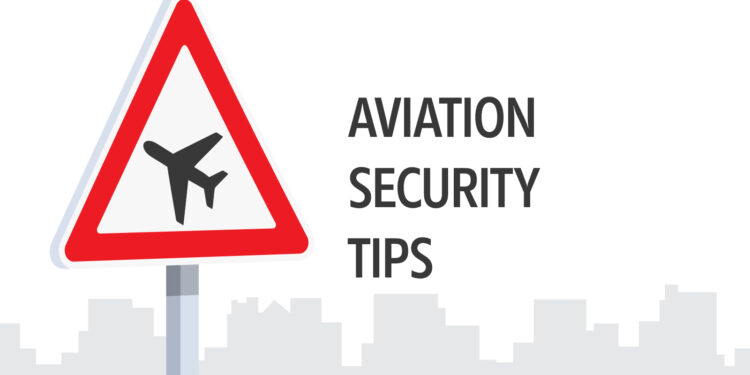Security Tips – Higher Threat Locations – Part 2: Local Crime and Kidnap Scenarios

This business aviation blog post continues from our article last week, entitled “Security Tips for Higher Threat Locations – Part 1: Risk Mitigation.”
When traveling with a private aircraft there’s a perception of wealth and there are people who see this as an opportunity to get something from you. Petty crime exists everywhere and risks of violent crime and/or kidnap are prevalent at many international locations. Being aware of, and mitigating, these risks is an essential trip pre-planning consideration.
The following is an overview of what you need to know:
1. Petty crime and mugging
When in foreign locations, even those you are familiar with, it’s always important to be mindful of your surroundings and potential risks and not to look like a soft or visible target. Dress down, do not show expensive jewelry or electronic devices, and try not to look vulnerable. There was a recent case of an older pilot walking around alone at night in Europe, wearing an expensive Rolex and talking on his phone, who was hit on the head and mugged by someone on a motorbike. The pilot had been to this location many times and was not being as vigilant as he could. We’ve seen higher risks of mugging and petty crimes lately in Western Europe and other seeming safe locales.
2. Keep a low profile
Especially in higher risk areas it’s important to avoid displaying perceived wealth. Leave the Rolex, designer sunglasses and jewelry at home. Avoid expensive designer sunglasses, U.S. sports team logoed jerseys and high end jewelry when walking the streets. To maximize security it’s also best to avoid using high profile and expensive makes and models of vehicles. You’re better off with a security trained driver in a nondescript vehicle than a limo or new SUV. Particularly in areas where there’s rampant crime and corruption, low profile vehicles are less obvious and harder to pick out on the street.
3. Executive protection
Many Fortune 500 companies have their own security departments and travel with executive protection personnel. Every country, however, has restrictions on traveling with weapons and you may need to arrange separately for armed and properly vetted local security personnel. Many considerations come into play when hiring local executive protection. You need someone who’s familiar with the region and properly licensed. In some cases you may pick up security personnel at a major business center, perhaps in Dubai or South Africa, and have them travel with you to regional destinations. However, it’s often advantageous to have them arrive at your destination ahead of time to check out items such as hotels, routes to/from the airport, dinner locations and the location of your business meeting. At some international locations you may have no options other than traveling with executive protection. For example, to obtain clearance for GA travel to Iraq you must have security onboard when you arrive.
4. Protective devices
While firearms and Mace sprays are not permitted in most international locations, there are legal devices to enhance security locally. Having a sat phone in regions where your cell phone may not work can be an important security consideration. You may also consider a GPS tracking program for your cell phone so that other crew members, and your company, can track your location. Traveling with a simple door stop is an effective means of boosting security in your hotel room. A personal keychain alarm may also help deter an attacker. But it’s best to have one that you can activate and throw so that it’s harder for an attacker to silence.
5. Kidnap risks
While we’re seeing some reduction in brazen kidnap scenarios around the world it’s still happening in many areas. These risks range from express kidnapping, where you may be taken to an ATM, to kidnappings with more violent outcomes. Mexico and Colombia, particularly outside of popular tourist areas, have heightened risks for kidnap but these risks are also present in India and Asia. Risk mitigation strategies help reduce kidnap events but having insurance to cover this eventuality is also worth considering. It’s important to understand that kidnap risks vary by region and different local scenarios exist. Best practice is to obtain a historical security assessment for the region you’ll be visiting and bolster this with analysis of current events and security issues. Take additional precautions in kidnap prone areas, such as security trained drivers, armored vehicles and executive protection.
6. Evacuation from a location
In higher risk areas it’s important to have contingency plans in place in case you need to get out early. Your 3rd-party provider can advise on options for alternate permits and/or airport slots in case you need to cut a trip short. It’s recommended to have contingency plans ready as well as evacuation insurance in the event of a medical emergency. In a kidnap situation contact local police, Embassy or Consulate on the ground and follow local laws as best as possible, but be aware that they may not be of much assistance. Work with your corporate security department, and/or the security department of the local company you’re visiting to help expedite pertinent information to the authorities.
Conclusion
Although we’ve seen risks and local threat levels go down in certain countries and areas, we do not foresee overall security risks decreasing globally. There is always the potential for violent crimes and kidnaps are always out there. You may be a random target or targeted based on your particular company, local business deals, nationality or perceived wealth. There are, however, effective steps you and your 3rd-party provider can take to significantly reduce risk throughout most of the world.
Questions?
If you have any questions about this article or would like assistance in planning security for your next trip, contact me at traciecarwile@univ-wea.com.



